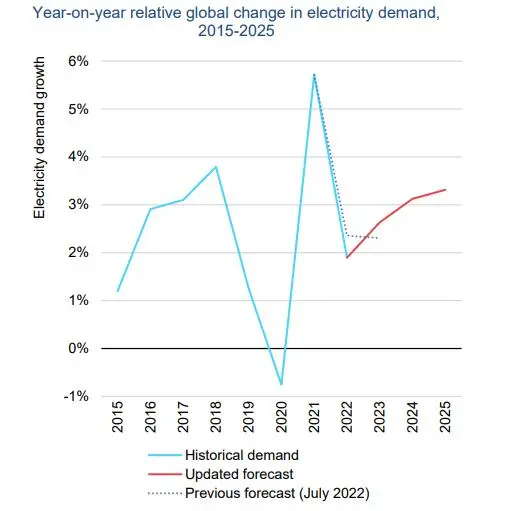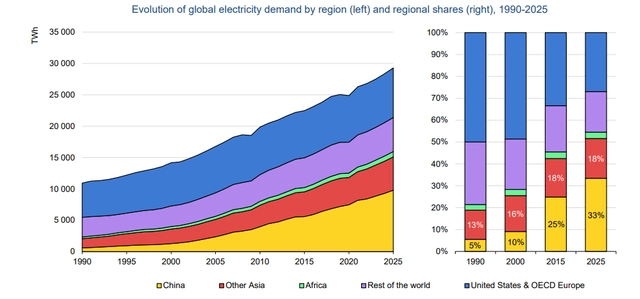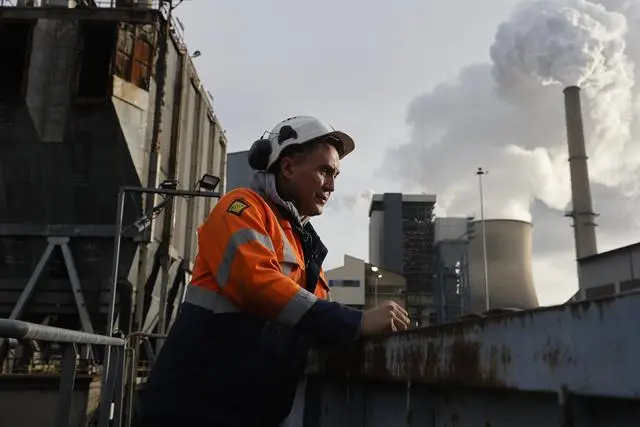The International Energy Agency (IEA) released the 2023 global electricity market report. According to the report, in the next three years, Asia will lead the rapid growth of global electricity demand.
At the same time, the growth of wind energy, solar energy and nuclear power will dominate the growth of global power supply, which means that the carbon emissions of the power industry are gradually approaching the peak.
Asia will drive rapid growth in electricity demand
The IEA predicts that global electricity demand growth is expected to be 2.6% in 2023, and at the same time increase by about 3.2% in 2024 and 2024, which is higher than the average growth rate of 2.4% in the years before the COVID-19 epidemic.

Growth rate of global electricity demand from 2015 to 2025
In the next three years, the world's global electricity demand will increase by 29,281 TWh, which is equivalent to twice Japan's current electricity consumption.
Asia will dominate the growth in global electricity demand. The IEA predicts that China, India and Southeast Asia will account for more than 70% of the global increase in electricity demand. Among them, China's share of global electricity demand is expected to increase from a quarter in 2015 to a third in 2025.

Changes in the share of global electricity demand by region from 1990 to 2025
The International Energy Agency emphasized that the growth of global energy demand is closely related to climate change. For example, last year's heat wave in India caused the country's electricity demand to reach the highest peak, meanwhile, due to last summer's dry weather, Europe's hydropower supply was also reduced.
Global electricity carbon emissions will be close to the peak
Despite the rapid growth in global electricity demand, IEA Executive Director Faith Birol said: "The good news is that renewables and nuclear power are growing fast enough to meet almost all of this additional demand, suggesting that we are approaching a tipping point for power sector emissions .”
According to the IEA, carbon emissions from the global power industry currently account for about 40% of total carbon emissions and are expected to stabilize in the future.
According to the IEA, the shares of wind and solar in the global electricity generation is expected to rise from 29% in 2022 to 35% in 2025. In addition, the global emissions intensity of electricity generation – the amount of carbon dioxide produced per energy unit – is expected to decline by an average of about 3% per year by 2025.
Asia Pacific sees largest growth in renewable energy
The IEA predicts that in the next three years, the Asia-Pacific region is expected to see the largest growth in renewable energy, with an average annual growth rate of 11.6%, followed by Europe, with an average annual growth rate of 9.4%, and the Americas with an average annual growth rate of 5%.
By 2025, the supply of nuclear power will grow by an average of 3.6% per year, with the highest annual growth rate of 24.5% in the Middle East, increasing from 26 TWh to 50 TWh; followed by the Asia-Pacific region and Europe, with an average annual growth rate of 6.6% and 4.2%.
The IEA also reported that production from gas-fired power plants in Europe is expected to decline, but gas production in the Middle East is expected to grow significantly.
The IEA predicts that European natural gas production will drop from 822 TWh in 2022 to 581 TWh, a drop of 29% in three years, and carbon dioxide emissions will drop by 1.023 billion tons to 763 million tons, an annual decline of about 10%.
Meanwhile, natural gas production in the Middle East is expected to increase from 973 TWh in 2022 to 1,094 TWh in 2025, an increase of 12.4% in three years.
